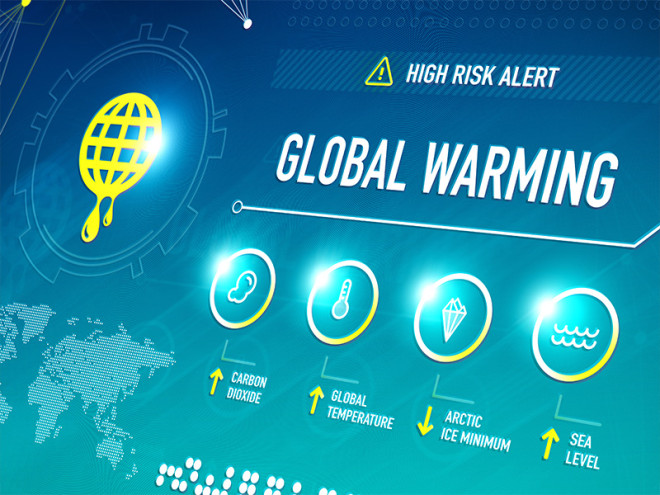Millions of people were caught in the winter storm ‘Jonas’ when it unleashed its snowy wrath, causing significant disruption and destruction since January 21, 2016. Getting the hardest hit cities up and running at normal capacity again make take several weeks and some are estimating the economic impact of the storm will exceed $850 million.
In the following weeks, there has been be extensive analysis of the storm and its total impact on the region. What may be of particular interest, however, is whether or not experts can offer any insight into what seems to be a troubling weather trend for this geographic area. In fact, it was the same week last year that another powerful nor’easter brought heavy snowfall and blizzard conditions to parts of Canada and Central and Eastern United States.
There is no question that weather patterns are complex, intricate systems with many different contributing variables and, when it comes to extreme weather or climate change, it does seem that ‘doubters gonna doubt,’ but one of the big questions we should be asking in the aftermath of yet another devastating winter storm, is whether or not climate change may be a contributing factor.
Specifically, to what extent could record-breaking arctic ice melt be playing a role in record-breaking extreme weather?
Scientists have been warning us for years now that Arctic ice is melting at an unprecedented rate. 2013 saw a record melt season, which was dramatically captured in a time-lapse satellite video by NASA. Ironically, the process by which Arctic sea ice is melting at such a rapid rate is confounded by a bit of a snowball effect: “The loss of sea ice decreases albedo [reflectivity] and results in greater absorption of energy in the water, and the warm water then heats the air above it. NASA’s CERES satellites have observed an increase of 10 watts per square meter of solar radiation absorbed by the Arctic Ocean from 2000 to 2014, says Dr. David Klein, director of the climate science program at California State University, Northridge.
Simply put, snow and ice reflect a large amount of the sun’s energy back out to space, but as that snow and ice disappears, more of the sun’s energy is absorbed by ocean and land surfaces, which further increases the warming trend in those regions.
According to Dr. Steven Vavrus of the Centre for Climatic Research at the University of Wisconsin-Madison, the global climate role of the Arctic is “to regulate the energy balance of the climate system and the weather circulation patterns both within high latitudes and elsewhere.”
Many experts contend that the loss of sea ice will result in higher absorption of solar energy by the Arctic ocean and land, with this additional heat being released from the Earth’s surface back into the atmosphere during autumn and winter. “That will then make the region much warmer during those seasons than in the current climate,” explains Vavrus. “That will likely lead to a weakening of jet-stream winds and probably a wavier jet-stream flow pattern.”
Current research focusing on this weakening, or wavier pattern, of the polar jet stream suggests that it may be to blame for more extreme or persistent weather patterns, such as those seen in the Northeast and Mid-Atlantic regions. With a warmer Arctic, the temperature differential between the Arctic and mid-latitude regions is consequently smaller, which, in turn, causes the west-to-east winds in the jet stream to weaken.
A stronger jet stream tends to move straight west to east, whereas a weaker jet will wander more in a meandering north/south path, which is what we have been seeing consistently since last winter.
Furthermore, the larger the jet stream’s waves, the slower it tends to move eastward, resulting in weather patterns that generate slowly and persist for longer periods of time. Now, while evidence points to climate change as a significant factor, researchers do admit that there are other contributing elements, such as the atypically strong El Niño event we are experiencing this winter. But dramatic changes are not just confined to the jet stream and mounting evidence has researchers wondering aloud if arctic ice changes might be to blame.
A study published in the Nature Climate Change journal last summer points to major changes in the Atlantic Meridional Overturning Circulation, which is a powerful ocean current largely responsible for carrying warm waters from the equator to the poles and back again, and is essentially the Atlantic branch of a much larger global overturning pattern whereby water is moved across the entire planet.
This process, much like the jet stream, relies on the temperature differential between water and the surrounding air to work most efficiently. With a warmer Arctic, there is a reduction in the heat transfer necessary for optimal overturning, particularly in gyres in the seas of Greenland and Iceland.
This means that the process by which cold, denser water sinks toward the bottom of the ocean and is carried southward as part of the Atlantic overturning circulation is less efficient. Researchers also suggest that melting ice in Greenland is contributing to higher levels of freshwater in the region, which furthermore disrupts and weakens the overturning process.
At this stage, it may be impossible to pinpoint precisely to what extent each contributing factor led to the perfect winter storm in the Northeast and Mid-Atlantic region. But we cannot ignore the mounting proof that we are already witnessing the impact of rapid changes in the Arctic, and that the most significant challenge will be anticipating the full extent of those changes or stopping them once they have started.
In addition to focusing research on these changes and their impact, we must continue to work on long-term solutions that restrict carbon emissions to help mitigate global warming and future climate change.
About The Author

- Serial Entrepreneur, Technologist and Inventor my objective is to develop useful products that have a net positive effect in the lives of those that use them and the environment that we live in. CEO of Mission LED Lighting Company Ltd.
- 2017.12.27UncategorizedSaving the World and Saving Money: Green Home Improvements Every Homeowner Should Make
- 2017.01.17Be green & save5 Simple Green New Year Resolutions For 2017
- 2016.11.09LED factsReplacing a 400 HID Lamp for an LED
- 2016.09.26Be green & saveVintage LED Bulbs Make What’s Old New Again





Leave a Reply